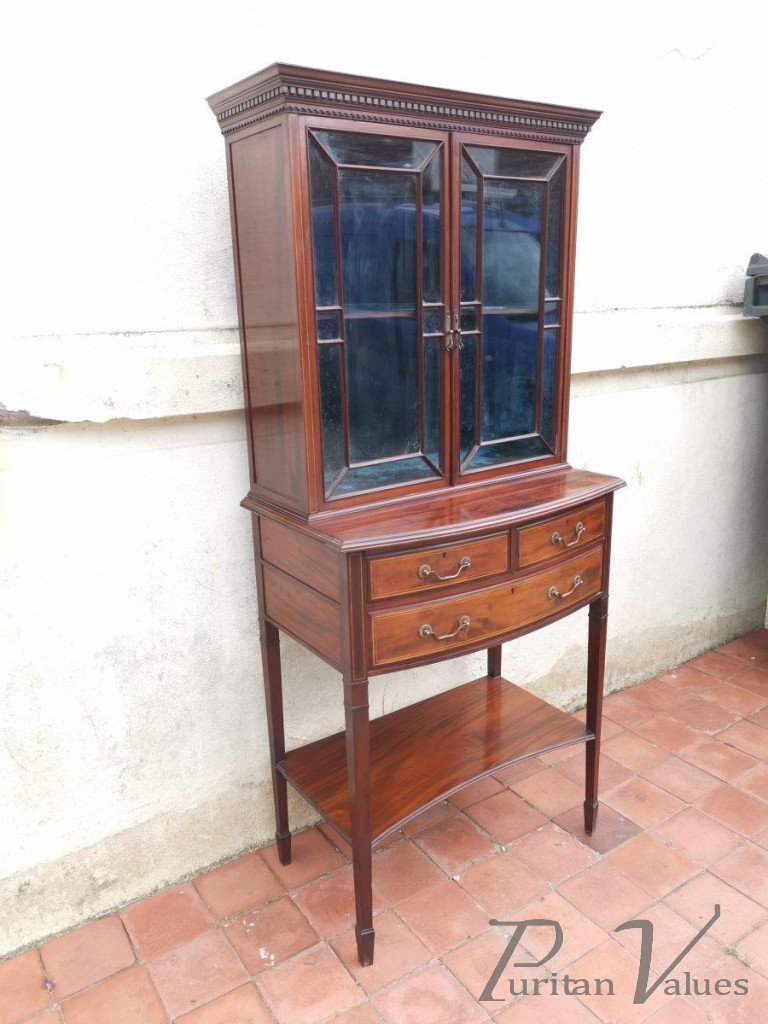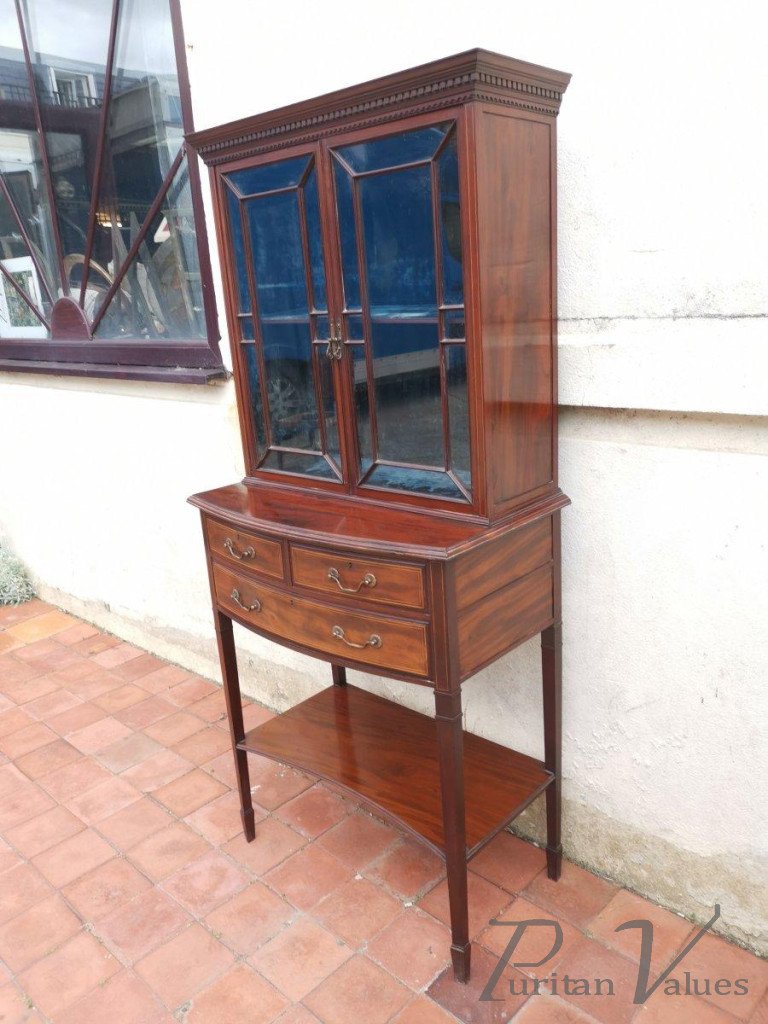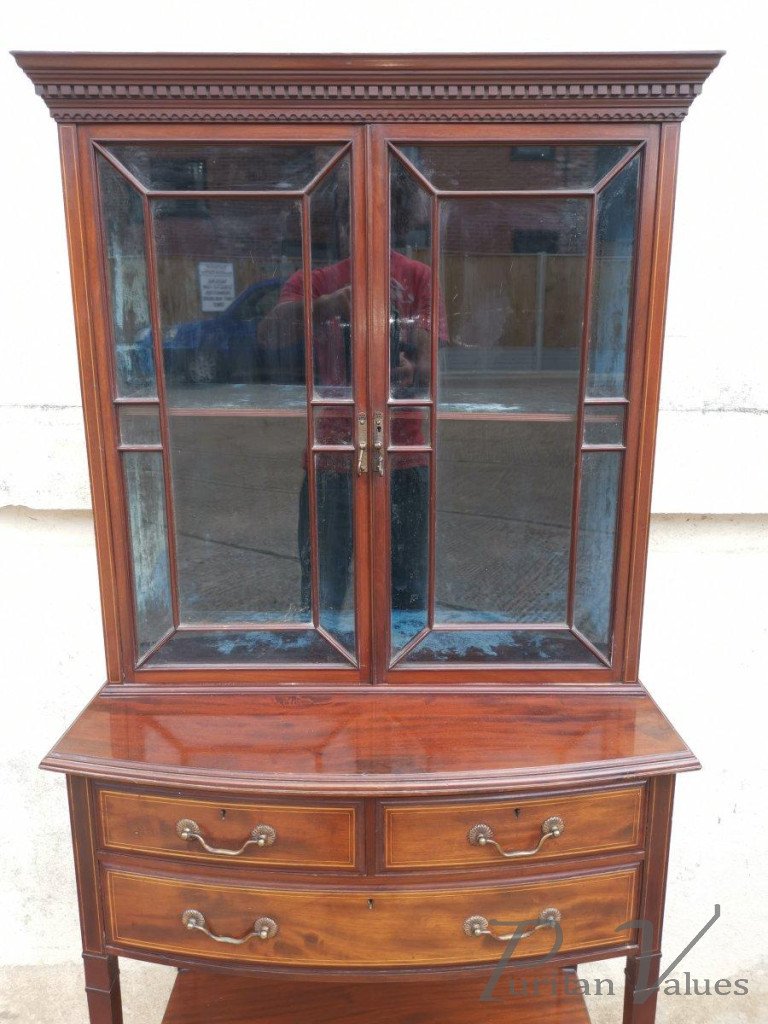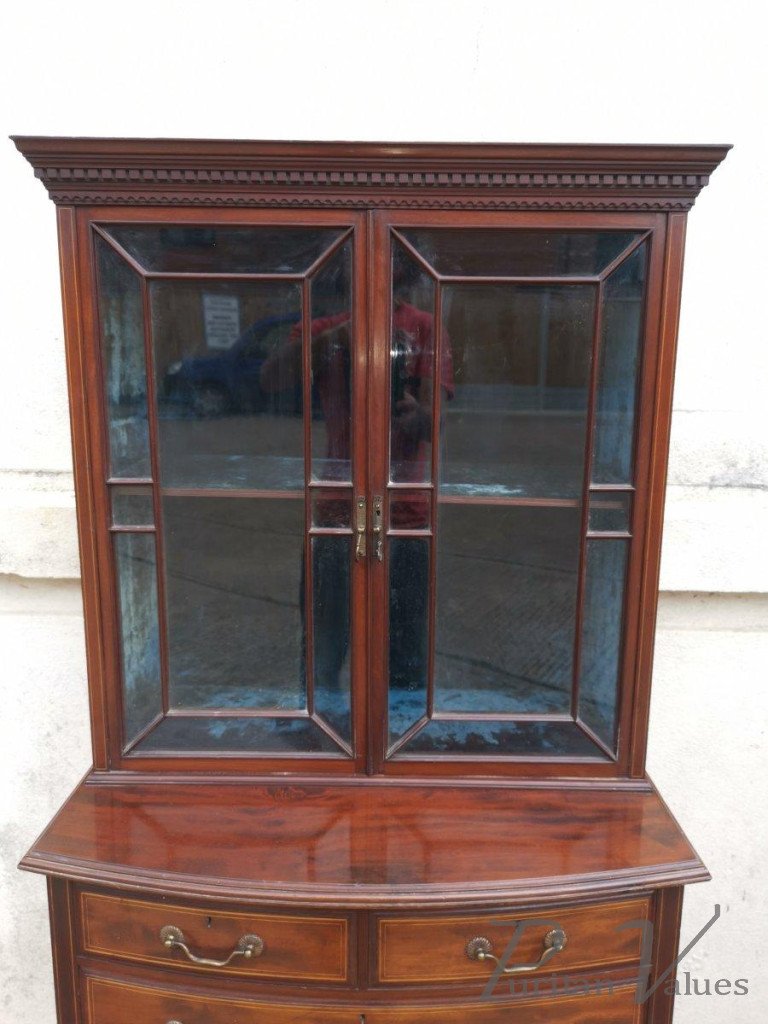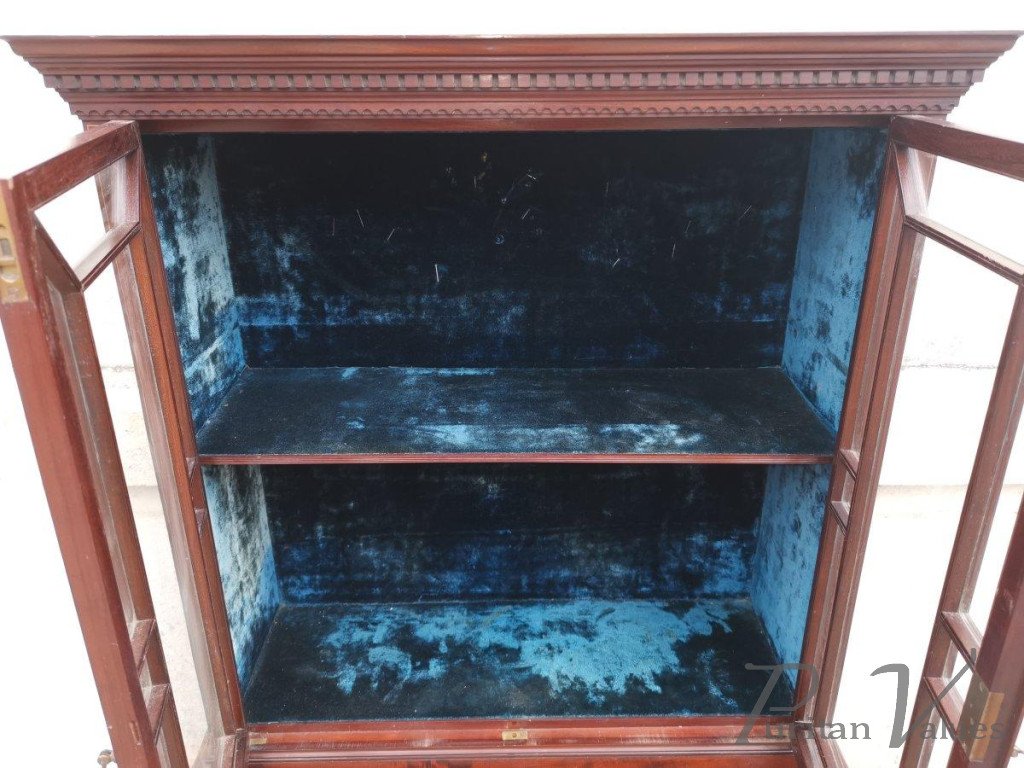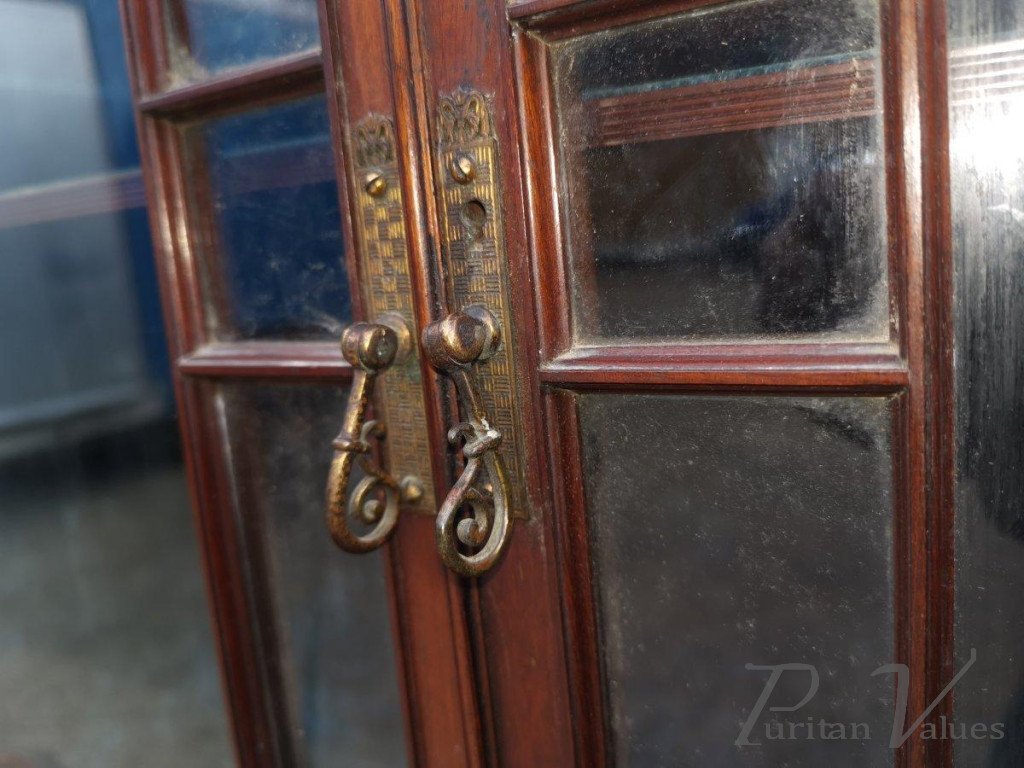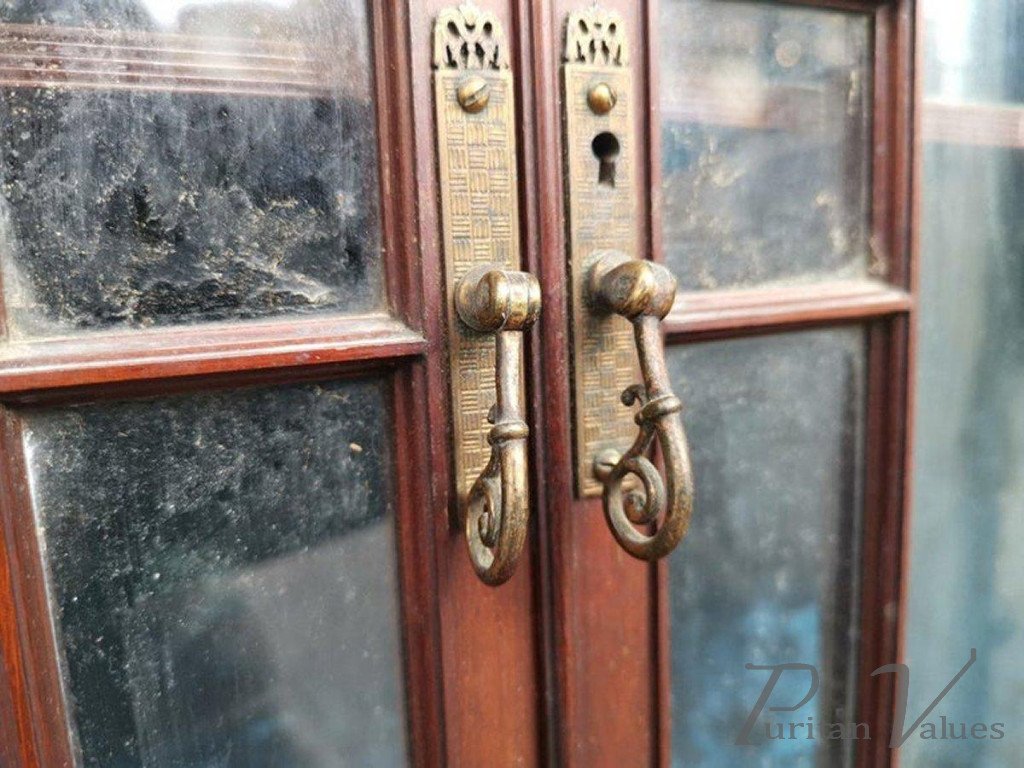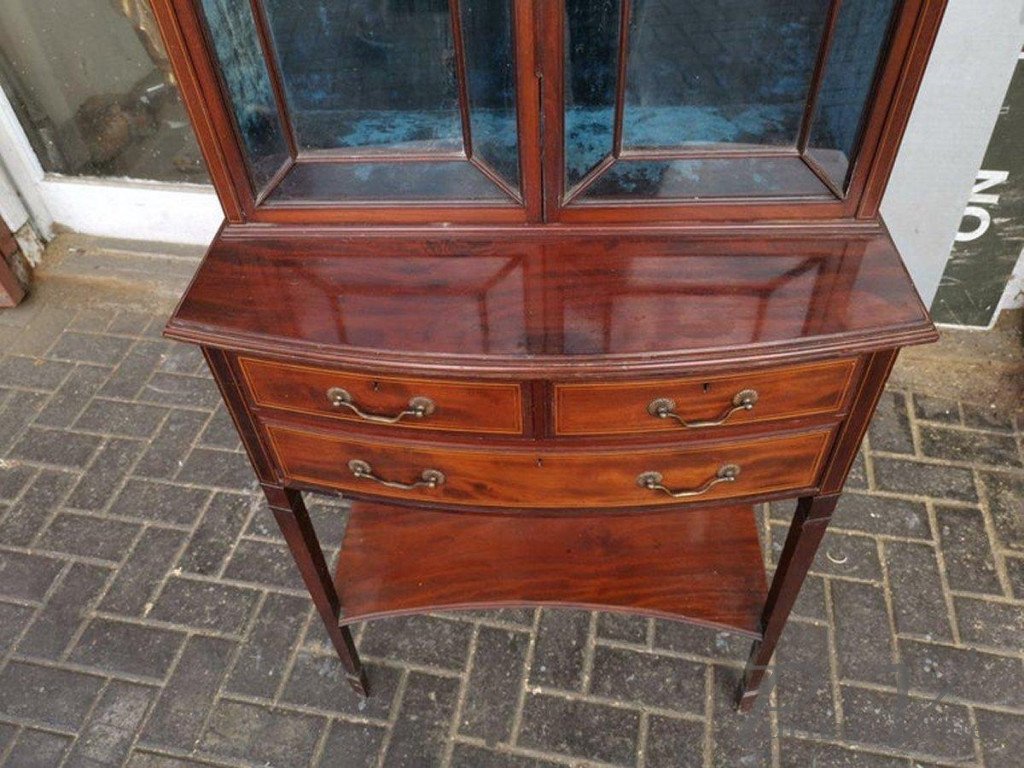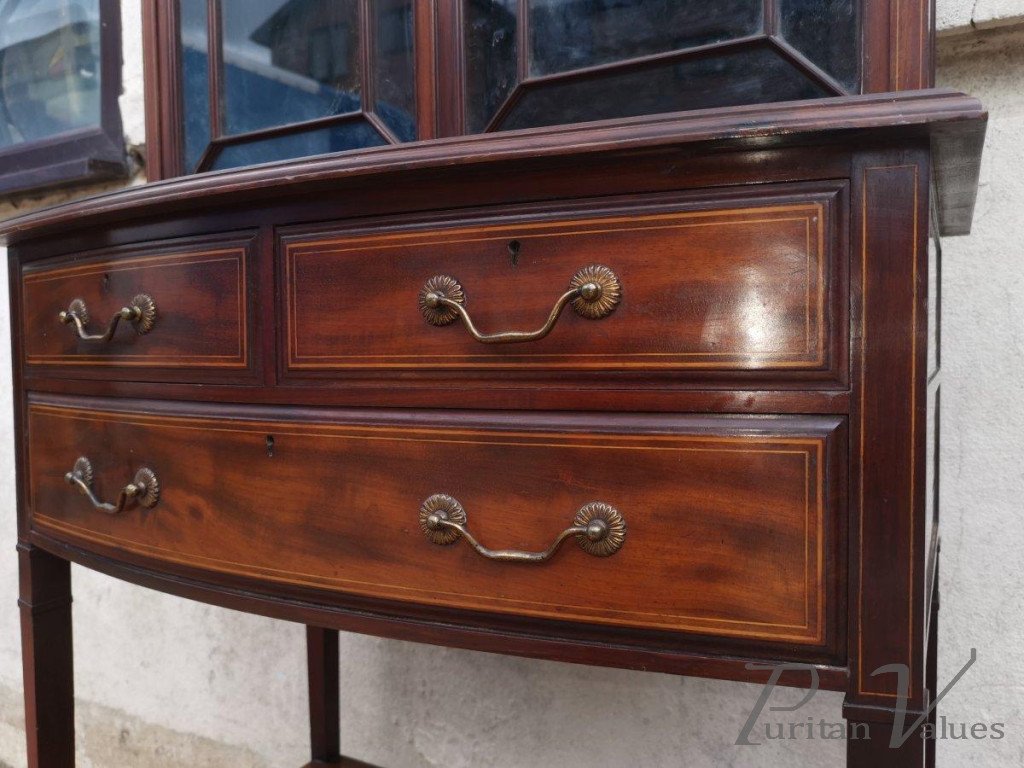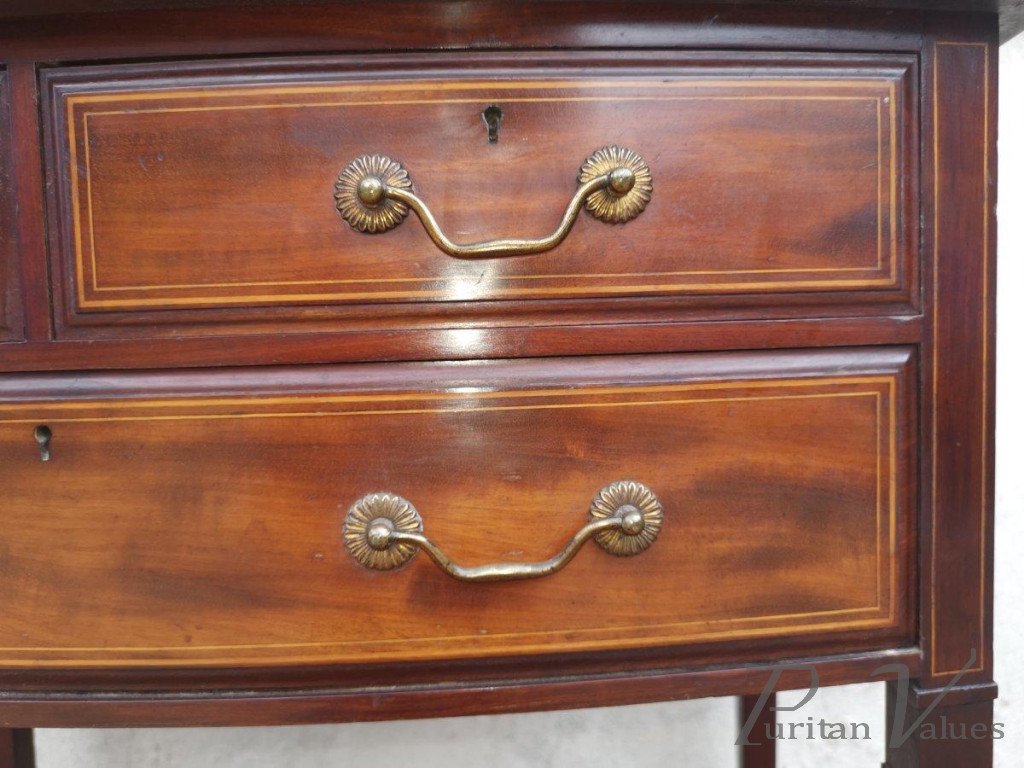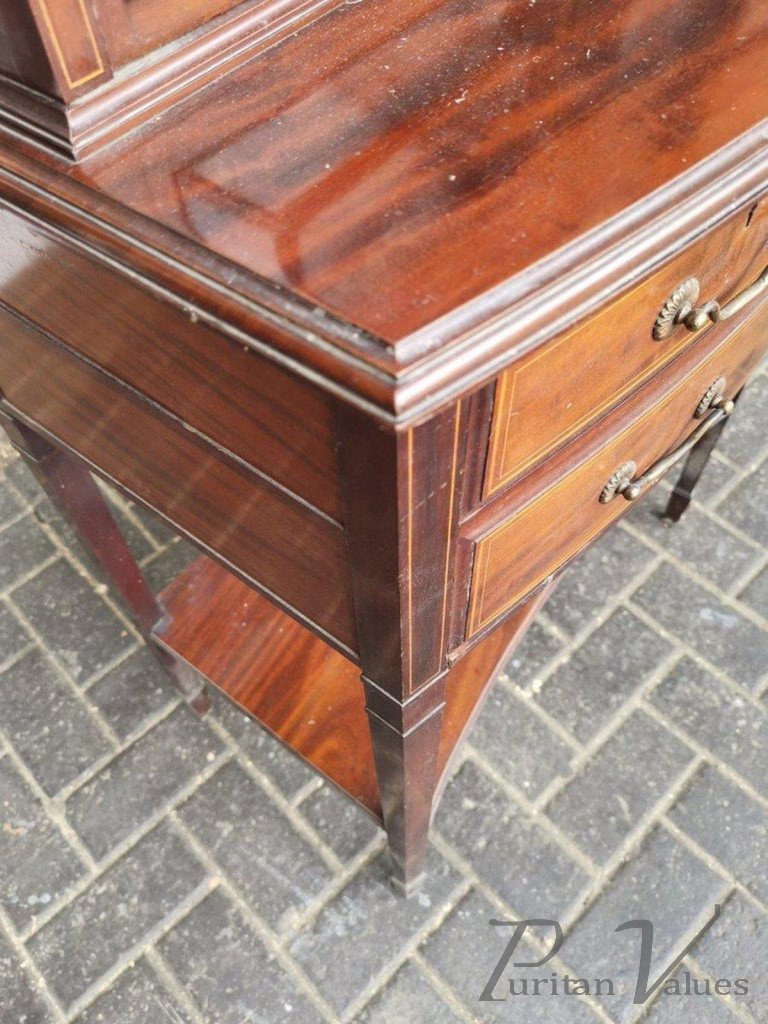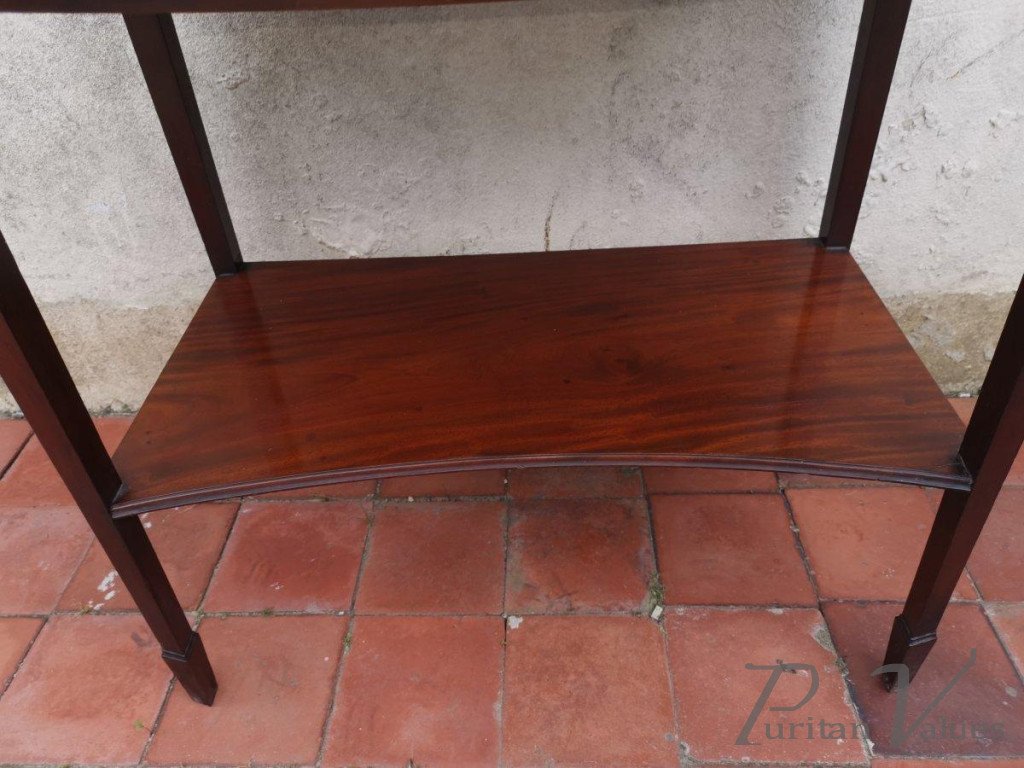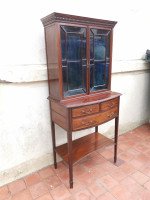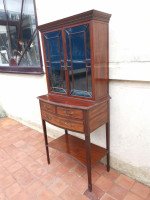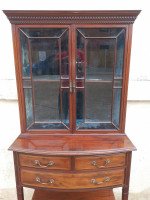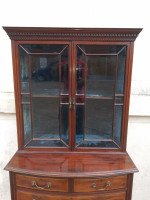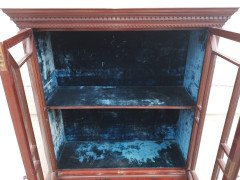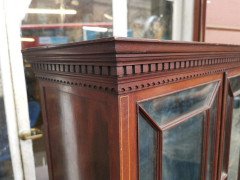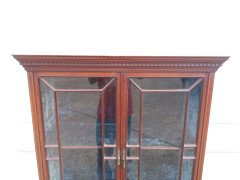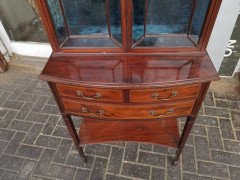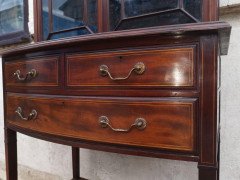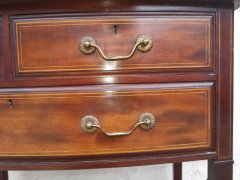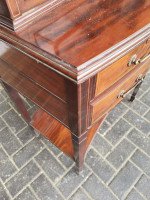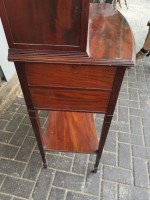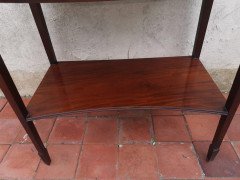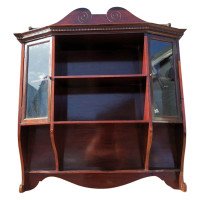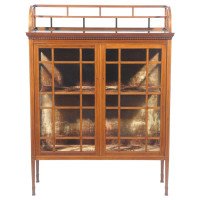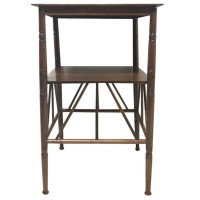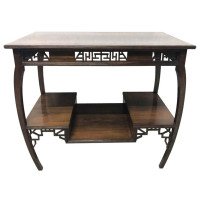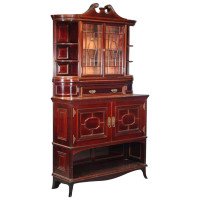Collinson & Lock. Aesthetic Movement Anglo- Japanese Glazed Walnut Side Cabinet
POA
Width: 32 in (81.28 cm)
Depth: 19 in (48.26 cm)
About this piece
Collinson & Lock. An outstanding quality Aesthetic Movement Anglo- Japanese walnut side cabinet with dentil moulding to the cornice and astragal glazed upper doors opening to reveal a luscious blue velvet interior with highly decorated handle back plates depicting Japanese basket weave with floral plumes and wonderful scroll work elongated drop handles, with a small work area and three bow fronted drawers below, each with half moon drop handles with sunflower rosette circular brass back plates. The whole on four tapering square legs united by an inverted lower shelf on spear head feet. Collinson and Lock of London ' Art Furnishers', founded with the partnership of F. G. Collinson and G. J. Lock, former employees of Jackson and Graham. Designers employed by the firm included T. E. Collcutt, the architect of their premises; E. W. Godwin, who was paid a retainer to produce exclusive designs for the company from 1872-1874, H. W. Batley and Stephen Webb. They made furniture for the new Law Courts to designs by G. E. Street, along with Gillows and Holland and Sons, and began decoration of the Savoy Theatre in 1881. Jackson and Graham was taken over in 1885, at the time when the firm had moved to Oxford Street and begun to focus on expensive commissions for grandiose London houses. The firm was taken over by Gillows in 1897. The firm of Collinson and Lock was established in London in the third quarter of the 19th century and quickly achieved both commercial success and a leading position in the field of design. In 1871 the firm issued an impressive illustrated catalogue of ' Artistic furniture', with plates by J. Moyar Smith, assistant to Christopher Dresser, and in 1873 was trading from extensive newly built premises in St Bride Street. The firm continued to produce very high quality items of furniture and soon began to experiment with new materials and designs, becoming especially renowned for their distinctive combinations of rosewood and ivory and their intricate Italianate arabesques, traditional figures and scrolling foliage. This form of decoration clearly points toward the involvement of Stephen Webb, Collinson and Locks chief designer who was later appointed Professor of Sculpture at the Royal College of Art. E. W. Godwin was their most important designer and so advanced were his designs in the Japanese style.


